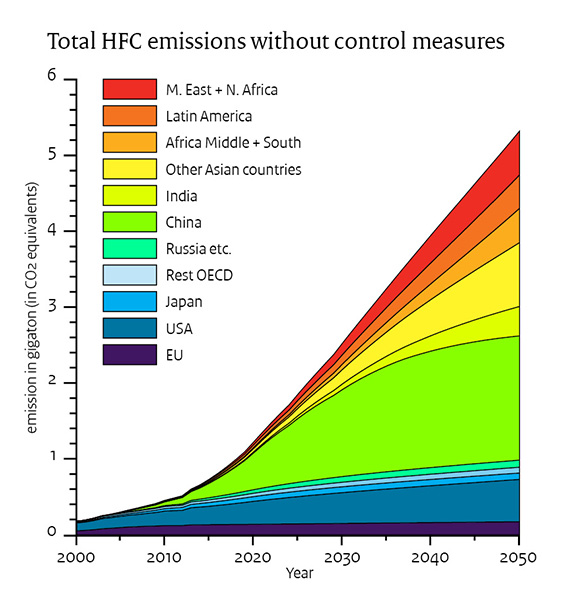HFCs are potent greenhouse gases because they absorb infrared radiation and because they have relatively long atmospheric lifetimes.
HFCs are potent greenhouse gases because they absorb infrared radiation and because they have relatively long atmospheric lifetimes. The five most commonly used HFCs are between 150 and 5,000 times more potent as a greenhouse gas than CO2. There is also an HFC which is up to 12,500 times more potent than CO2.
If the global use of HFCs continues to grow at the current rate, their contribution to the greenhouse effect will increase up to 10 percent of that of the main greenhouse gas CO2 in 2050. The HFC emissions are expected to increase especially in emerging economies such as China, India, and other Asian countries. Without limiting HFC use, about 50 percent of their emissions will be due to refrigerators and about 30 percent due to air conditioners in 2050.
Apart from these direct contributions of HFCs to the greenhouse effect, there are also indirect contributions through the energy use of the applications; see “Alternatives and energy use”.
The figure shows the HFC emissions without measures for the various countries and world regions.
